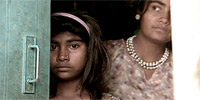In This Episode << SLIDE LEFT TO SEE ADDITIONAL SEGMENTS
India Sex Selection
FRED DE SAM LAZARO, correspondent: For some months, Pooja, a 22 year old mother of three, has been coming to this crisis counseling center in a lower middle class neighborhood of Delhi.
Pooja is trying to keep her family together. Her husband and in-laws—with whom she lived in the common tradition here—threw her out of the house. The problem: all three of her children are girls.
POOJA: The family says they need sons to carry on their name and since I have only three daughters, they tried to trick me into signing divorce papers so that their son could marry again. That led to some violence when I refused and I had to run away to my mother’s house for our safety.
DE SAM LAZARO: The preference for boy children dates back centuries—driven by religious custom.

RANJANA KUMARI (Center for Social Research): Only boys can look after the parents, they are the only ones who can perform the last rites. They are the only ones who will continue the family lineage. If all that is there then why will anybody wants to have a girl child? And also on the top of that you have to pay a dowry.
DE SAM LAZARO: Ranjani Kumari has studied the dowry system, which she says is mistakenly believed to have roots in Hindu scriptures.
KUMARI: This was never a practice anywhere prescribed but certainly it was said that when the princess goes, she must carry a number of horses because she’s used to a certain level of comfort, and so it is the duty of the king to insure the daughter is…and that gets distorted so that even the poorest of the poor who cannot afford two square meals will also have to buy things for the wedding of the daughter.
DE SAM LAZARO: Dowries were outlawed half a century ago but the system remains pervasive and adds a huge commercial dimension to marriage in India. With rising aspirations in a rapidly growing economy, sociologist Ravinder Kaur says daughters have become a financial liability.
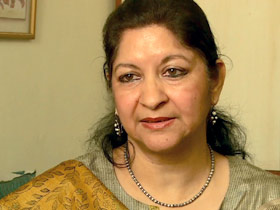
RAVINDER KAUR (Indian Institute of Technology): They don’t want to pay dowries. They want to receive dowries. They want to give more education to the boys than to the girls, because for them, the boys are still more important.
DE SAM LAZARO: India’s census starkly bears out that bias. For every 1,000 male babies born, there are just 914 females—far fewer in some regions. In nature, the numbers are about equal. The gap began to widen in the 1990s with the advent of ultrasonography, allowing early detection of a fetus’ sex. That’s been blamed for the widespread abortion of female fetuses.
(from 2001 footage): So this is your clinic?
Dr. Kakodkar: (from 2001 footage) Yes.
DE SAM LAZARO: Abortion is legal in India but it is illegal when done for sex selection. However, tracking the intent is almost impossible as gynecologist Prakash Kakodkar admitted with startling candor in a story I reported in 2001. He does them routinely.
(to Dr. Kakodkar): So you freely admit that you do, basically, contravene the law. I mean…
DR. PRAKASH KAKODKAR: Yes, most of us do, I would say. I wouldn’t deny that.
DE SAM LAZARO: Do you face any legal sanctions?
DR. PRAKASH KAKODKAR: No, that’s what I said: there is no legal sanction because there is nothing on paper. I mean, who can ask you?
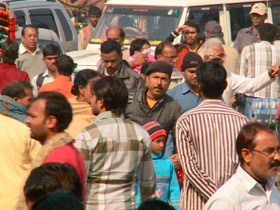
DE SAM LAZARO: The lopsided sex ratio has only spread in recent years. Two decades ago it was mainly in the northern farm states, where many families were entering the middle class thanks to India’s green revolution. Now Kaur says it’s in areas where a new middle class is emerging.
KAUR: Places like Uttar Pradesh, Bihar, Orissa, which are becoming more prosperous where there will be greater availability of technology and more incomes in the hands of families, they will tend to shape the family and sex select.
DE SAM LAZARO: As these areas become more affluent, fertility rates—the number of children born per woman—are declining. That’s welcomed by people concerned about population growth. These are some of India’s most densely populated regions. But when it comes to gender balance, it’s not good news, Professor Kaur says.
KAUR: You know when you want a smaller family, then the squeeze is on the girls because interestingly, suppose you’re moving from a fertility rate of four, to three. Then you want two boys and one girl. So if a lot of families in populous states want two boys and one girl, then obviously there’s going to be a great excess of boys.
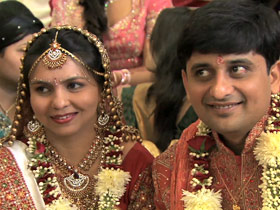
DE SAM LAZARO: She says the social consequences of this demographic shift are already visible in those northern farm states, where there’s a growing shortage of brides.
KAUR: And as a result, men in these states have been importing brides from let’s say the east of India, the south of India, they’re sort of going shopping for brides wherever they can and many people call it “bride trafficking.”
DE SAM LAZARO: These marriages across India’s diverse cultural landscape can be fraught with social complication. But at the same time, Kaur sees an ever so slight improvement in the gender ratio in those states that saw early prosperity.
KAUR: Once people reach the higher realms of the middle class, which are called the stable middle class, they don’t sex select. Then they tend to view girls and boys as being of equal value. So they don’t really care whether they have two girls, whether they have one girl, one boy, etcetera.
DE SAM LAZARO: But for many years, India will present a patchwork of progress—a worsening gender balance in many places, slight improvement in some. The Center for Social Research’s Kumari sees one more positive development that’s a consequence of India’s growing and urbanizing middle class: more girls are going to school.
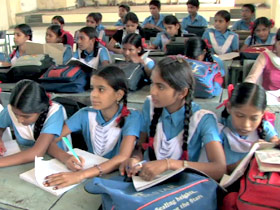
RANJANA KUMARI: As I said, India is full of contradictions. On the one side you see women in the villages still very disempowered but on the other side there is a brighter picture. We have the largest number of doctors, lawyers, professionals, our education level is going up for the girls. When you look at the new economy girls have got lot of new opportunities, you know, media, IT industry banking, entertainment. Whichever sector you see, women are filling the ranks in a very major way.
DE SAM LAZARO: Counseling center client Pooja never set foot in a school but she wants an education for her daughters. And that’s why she says she needs her husband’s help to provide it.
POOJA: Women are progressing more in society and I need the support of their father so that they can grow up in a proper family, so that they can get a good education, so that they can grow up and have good marriages.
DE SAM LAZARO: She’ll have an uphill battle—socially if not legally—to provide daughters with the family structure she calls ideal. But she says the best dowry her daughters could have is an education.
For Religion & Ethics NewsWeekly, this is Fred de Sam Lazaro in New Delhi.


